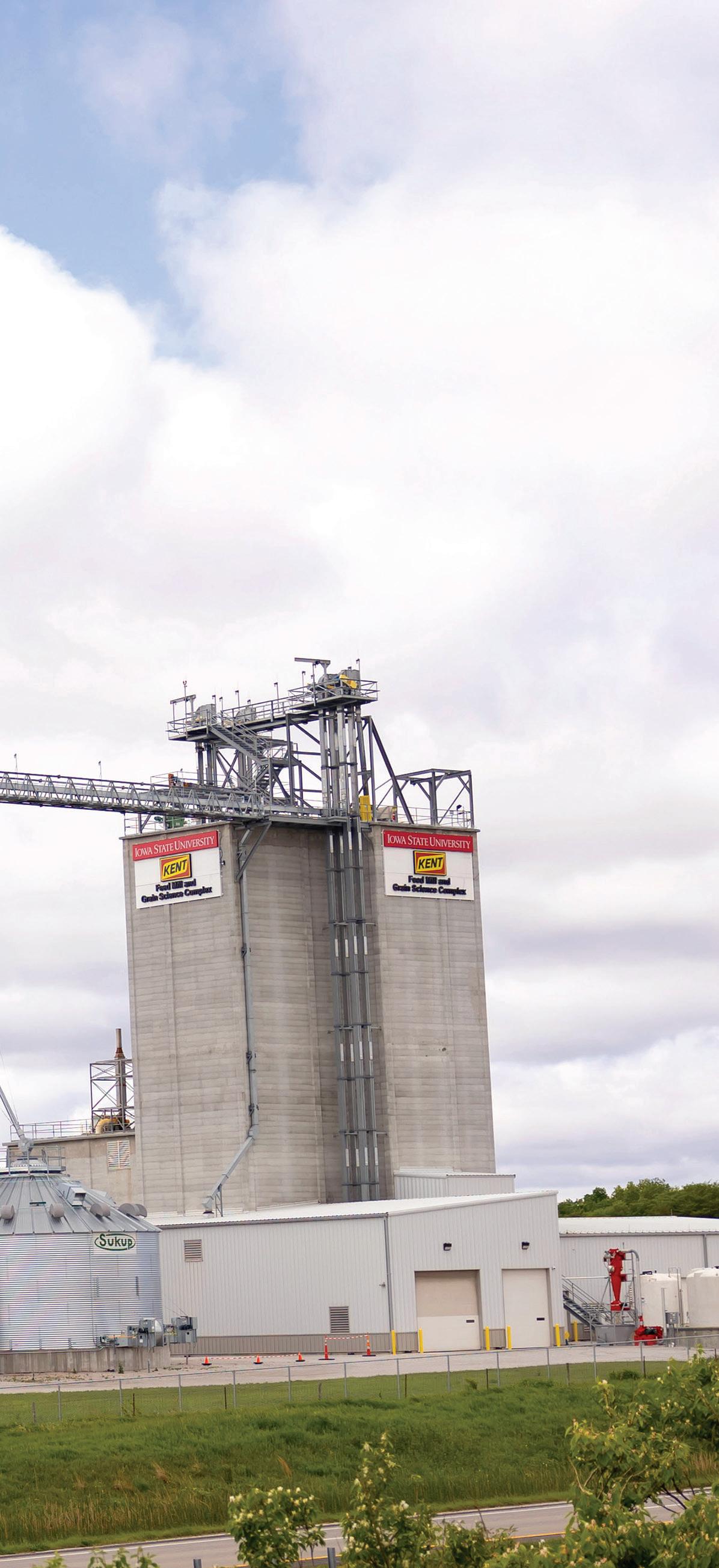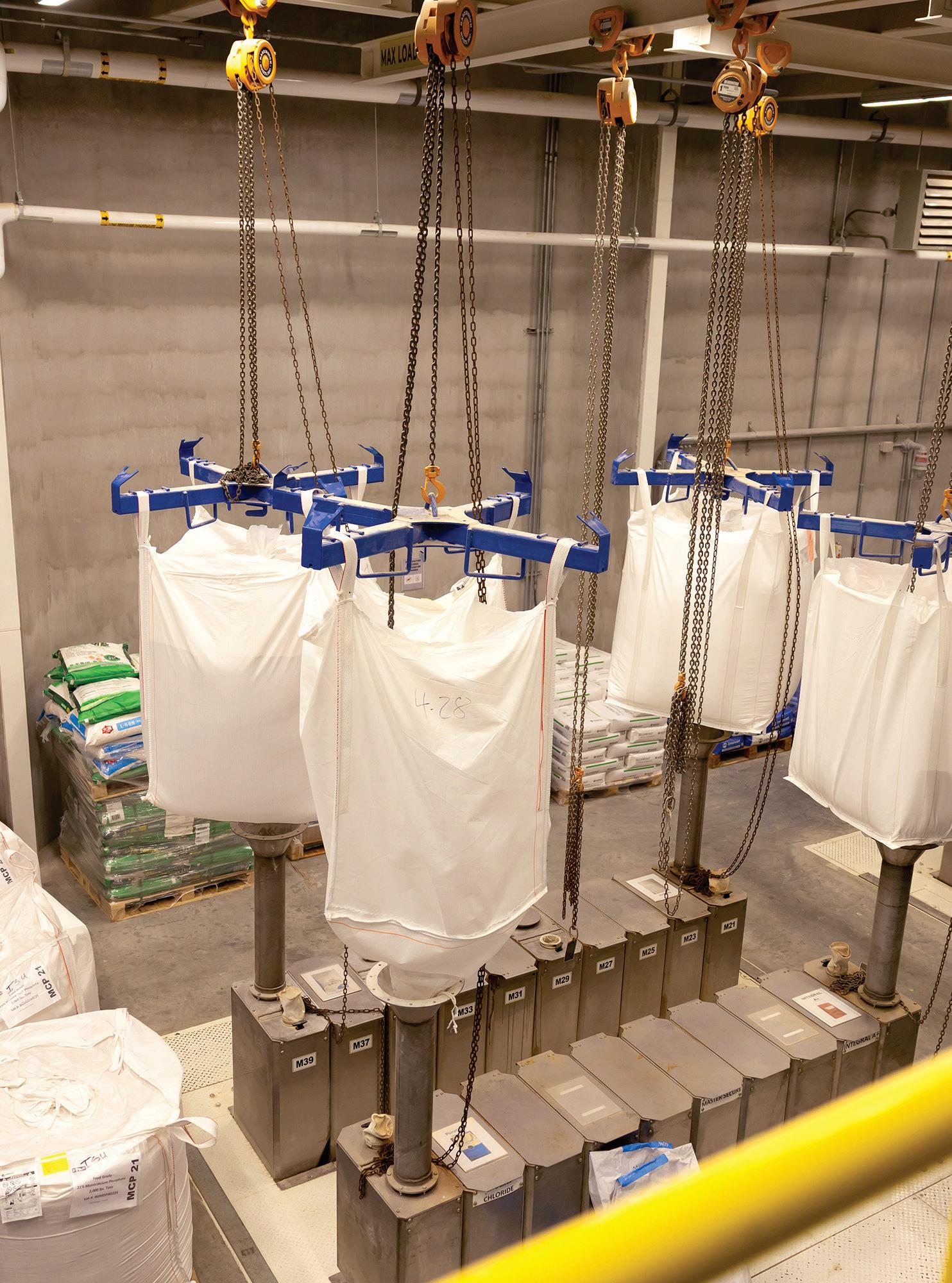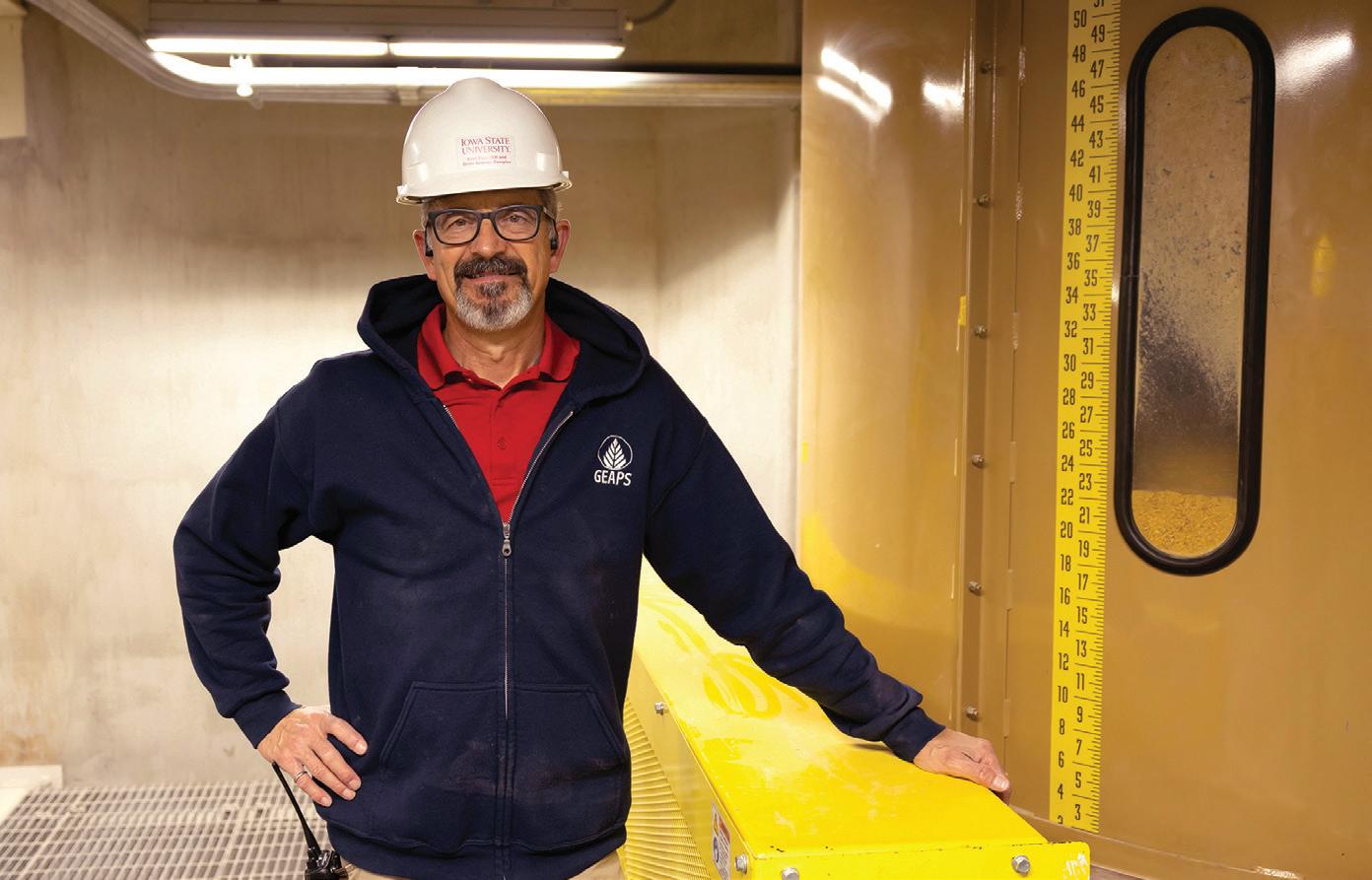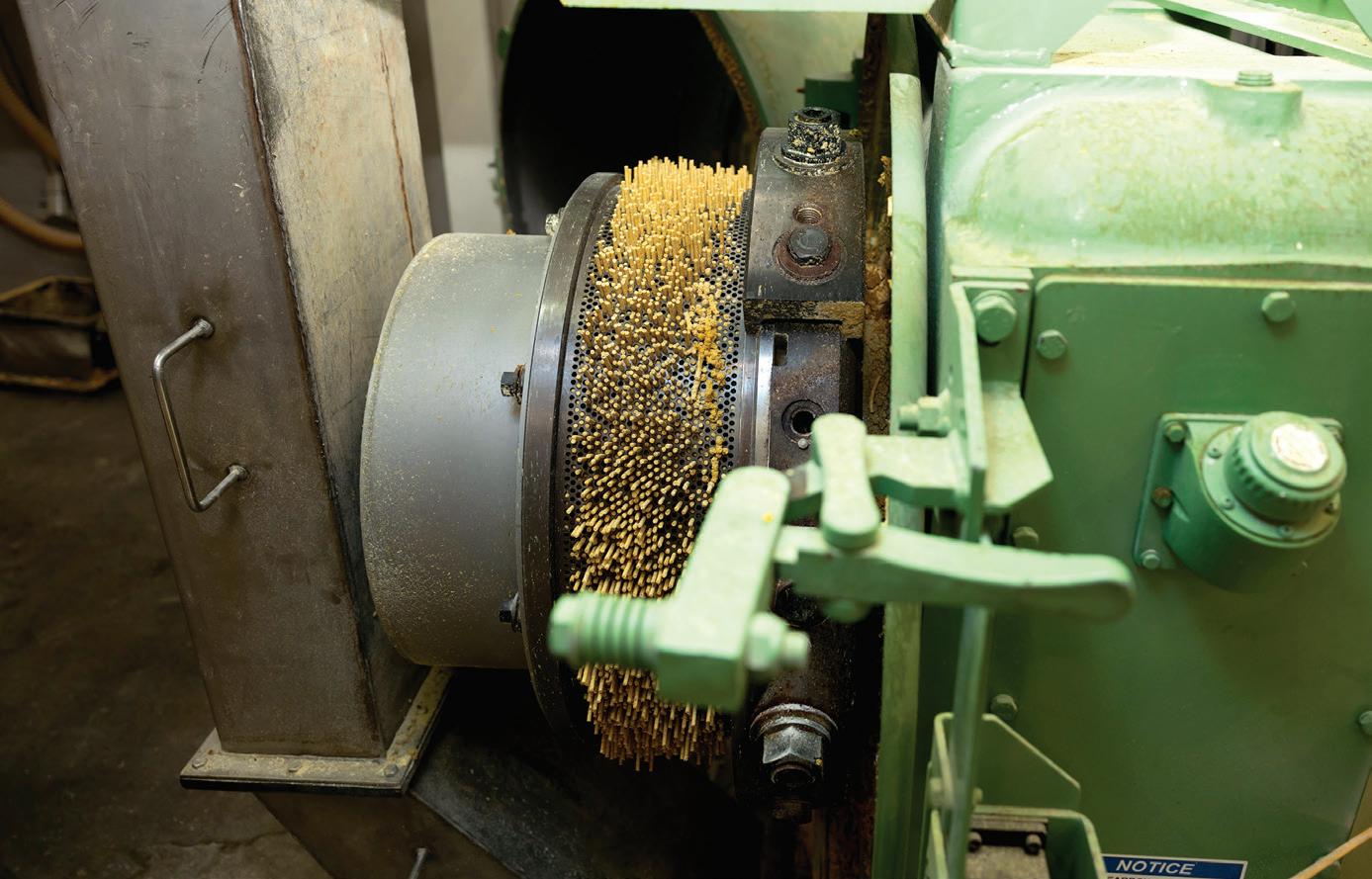
5 minute read
Feed 'Em Right
Feed 'Em Right
HIGH-TECH FEED MILL SUPPORTS A SAFE, SUSTAINABLE FOOD SUPPLY
By Darcy Maulsby
When egg prices skyrocketed earlier this year, consumers started paying a lot more attention to the poultry industry. An innovative feed mill and grain science complex south of Highway 30 in Ames also focuses on this critical ag sector, but this isn’t a typical Iowa feed mill.
“This facility is unique not only in America, but in the world,” says Dr. Dirk Maier, an Iowa State University (ISU) professor of agricultural and biosystems engineering who oversees the ISU Kent Feed Mill and Grain Science Complex.
Gone are the days when running a feed mill meant adding some corn and pushing a few buttons to make rations. Today’s high-tech, computerized mills require skilled operators to provide precision nutrition for livestock. ISU’s new $35 million feed mill complex, operational since September 2023, produces pathogen-free feed — free of harmful bacteria, viruses and parasites — using carefully controlled processes and ingredients that meet the highest standards of quality, nutrition and biosecurity to protect animal health and prevent disease.
The ISU mill supplies feed for a company that helps improve laying hens’ genetic potential — their inherited ability to produce high numbers of quality eggs safely and efficiently — and supplies baby chicks for customers worldwide. The mill also produces pre-mixes (blends of vitamins and minerals mixed with grain and/or forage) for the beef and dairy industries.
“ISU is in a sweet spot in terms of crop production and the feed industry, not only in North America, but the world,” Maier says. “Our goal is to help the ag industry better meet modern animal nutrition needs.”

Boosting Value-Added Ag in Iowa
Iowa leads the nation in feed ingredients (29.1 million tons) that are fed to animals, primarily hogs, beef cattle and egg-layers. In addition, the state’s feed industry generates $16.5 billion in sales, according to the American Feed Industry Association. More than 45,000 jobs in Iowa are connected to the feed industry.
While Iowa has long been an epicenter of livestock and grain production, ISU lacked a modern feed milling facility for research, teaching and production for decades. “A lot of amazing things came together to make this new facility a reality,” Maier says.
Not only did ISU administrators see the vision, but donors did as well. Private funds financed 100% of the project. The name of the ISU Kent Feed Mill and Grain Science Complex honors the lead donor, Kent Feeds, who is based in Muscatine.
Construction on the commercial feed manufacturing facility started in the fall of 2020 at ISU’s historic Curtiss Farm. Today, the complex includes a mill with a capacity of approximately 20,000 tons of feed per year and bins that can hold 200,000 bushels of grain. “About a third of the harvest from ISU’s research farms gets delivered here,” Maier says.
The main mill can run 12 hours a day, Monday through Friday. It uses a variety of ingredients, including soybean meal, soy hulls (for fiber) and soy oil, to make feed rations. “We don’t compete with the commercial feed industry,” Maier says. “We focus on custom production, specialty feeds and smaller feed batches for a variety of livestock.”
The mill complex also includes an educational building with classrooms. The facility allows graduate students to research areas from feed production to process engineering. In March 2025, a new pilot plant came online at the complex. Maier says this smaller version of the main feed mill is invaluable for research.
About a dozen undergraduate students work at the main mill every week. ISU offers a minor in feed technology to prepare students to meet the growing demand for highly skilled, grain and feed industry professionals.
“This is like an apprentice program where you get practical, hands-on experience as you work, learn and earn,” Maier says. “This opens up a broad range of career opportunities for students majoring in animal science, engineering, finance, accounting, ag business and more.”

A Mill is a Game Changer for the Global Grain Industry
ISU’s state-of-the-art feed mill and grain-handling complex offers incredible potential to impact the grain industry on a global scale. In 2024, the facility welcomed more than 2,100 visitors from 26 countries in Asia, Latin America and beyond.
“No other university has something quite like this,” Maier says. “This facility allows us to work with groups like the Iowa Soybean Association and Iowa Corn to bring international teams from the U.S. Soybean Export Council and the U.S. Grains Council. We help them learn about Iowa agriculture, which helps develop more markets for Iowa ag products.”
Maier and his colleagues also hosted 136 different educational seminars, workshops and short courses in 2024. A variety of participants, including employees in the feed milling and grain industries, come here to learn more about feed technology, grain science, animal nutrition, regulatory compliance issues, biosecurity and advanced processing methods.
ISU’s feed mill complex marks a big step forward in making food systems more secure and sustainable, all while making Iowa agriculture more competitive, Maier says. “This project has turned out even better than I thought — and we’re just getting started.”











